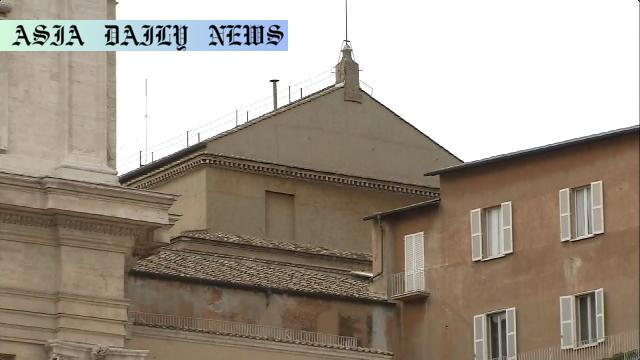Conclave to Elect the Next Pope Set for May 7 in Vatican’s Sistine Chapel.
- To honor Pope Francis’ passing, a conclave will start May 7.
- Cardinals will gather in the Sistine Chapel for voting.
- Two-thirds majority is required to elect a new pope.
- White smoke and a bell signal the successful appointment.

The Historical Significance of the Papal Conclave
The conclave holds immense significance in the Roman Catholic Church as a centuries-old tradition to elect a new pope. This solemn and structured process symbolizes the unity of the church and its dedication to divine guidance when choosing its spiritual leader. With the passing of Pope Francis, the upcoming conclave on May 7 becomes not only a tribute to his legacy but also a pivotal moment for the future of the church. Over 135 cardinals from across the globe will gather in the Sistine Chapel, an iconic location known for its breathtaking Michelangelo frescoes and its enduring association with papal history.
The term “conclave” is derived from the Latin word con-clave, meaning “with a key,” representing the seclusion of the cardinals during their electoral process. This tradition is upheld to maintain secrecy and sanctity, ensuring that the external world does not interfere with the divine process of electing a new pope. Each cardinal, before voting, solemnly takes an oath of confidentiality, reinforcing the sacred nature of this exercise. As the church finds itself in a transformative period, with shifting global dynamics and evolving societal values, this conclave is expected to hold heightened significance both within and outside the Catholic community.
The Process: From Black Smoke to White Smoke
The papal election process is as intricate as it is historic. On May 7, cardinals eligible to vote—those under 80—will converge to cast their ballots. To elect a new pope, a candidate must secure two-thirds of the total votes. This supermajority ensures a consensus that reflects the collective wisdom of the church’s senior-most clergy. Each voting round is preceded by prayers and reflection, reinforcing the divine nature of this solemn occasion.
The world watches with bated breath as signs of progress emerge from the Sistine Chapel’s chimney. Black smoke signifies an inconclusive vote, while white smoke, accompanied by joyous bell tolls, signals the announcement of a new pope. This unique way of communication dates back centuries and continues to captivate millions worldwide. The anticipation of white smoke carries profound spiritual and emotional weight, reminding Catholics of the divine hand that guides this decision. The conclave’s tradition is not just a moment of decision-making; it is a profound embodiment of faith and continuity.
The Challenges Ahead for the New Pope
As the Catholic Church stands at a crossroads in a rapidly changing world, the new pope will face a myriad of challenges. From navigating modern societal norms to addressing internal controversies within the church, the role of pope carries immense responsibilities. Issues such as interfaith dialogue, sexual abuse scandals, climate change, and global inequalities present pressing concerns for the next leader of the church.
Additionally, the declining influence of organized religion in certain parts of the world requires urgent attention. The pope is not just a spiritual leader but also a global influencer, shaping conversations that transcend religious boundaries. Stepping into Pope Francis’s shoes, the new pope will inherit an era marked by efforts towards inclusivity, compassion, and reform. The decisions made by the upcoming conclave will not only shape the Catholic Church’s immediate future but also leave a lasting impact on its position in history.



Commentary
The Unique Nature of the Conclave
The conclave is one of the most fascinating and sacred traditions in the Catholic Church. It is both a deeply spiritual exercise and a historical event, binding centuries of rituals and beliefs. What makes the conclave particularly awe-inspiring is its blend of spirituality, ceremony, and intrigue. When the doors of the Sistine Chapel close on May 7, cardinals reflect not just on whom to choose but also on the immense responsibility that choice entails. This sacred duty, complete with age-old traditions like the white and black smoke, is a reminder of the church’s enduring legacy.
Reflection on the Global Impact
The selection of a pope goes beyond the boundaries of religion and carries global significance. A new pope can redefine the church’s stance on critical social and moral dilemmas. Leaders across civilizations observe the conclave with respect due to its influence over 1.3 billion Catholics worldwide. As the heart of the Catholic world, the Vatican becomes the focus of every media outlet. Watching the smoke rise is not only symbolic of tradition but serves as a unifying moment, bringing believers and even non-believers together in solidarity.
Personal Take on Modern Challenges
With this conclave, we are reminded of the challenges the Catholic Church must address. From internal corruption to the church’s relevance in contemporary society, the election of the next pope is pivotal. His ability to bridge modernity with faith will determine the church’s future trajectory. Whatever the outcome, one cannot help but be captivated by the profound significance and beauty of these traditions that transcend time.